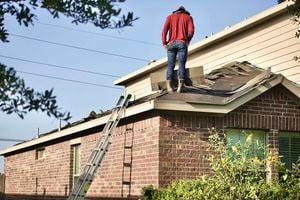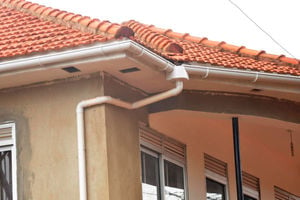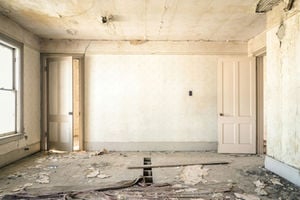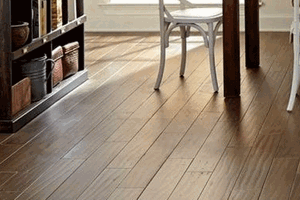
Without proper site preparation and moisture barriers, dampness can easily affect the walls. PHOTO/FILE
Many houses suffer from recurring water damage, leading homeowners to invest in annual renovations. Another approach is to try different waterproofing solutions and contractors to resolve the issue. In the construction industry, waterproofing remains a critical component that is often overlooked, yet it plays a crucial role in ensuring the longevity and durability of structures.
Eric Omondi, the business development director at Xecor Uganda Limited, notes that despite the significant need for effective waterproofing solutions, the market is been flooded with subpar chemicals and poor works, that fail to address the problem effectively. He says their company provides one of the most effective solutions for waterproofing homes on the Ugandan market.
What causes wall dampness?
To address the issue of water damage it is important to first identify the causes. Omondi says the problem is largely due to a combination of environmental, structural, and maintenance factors.
High humidity and rainfall
Uganda has a tropical climate with high humidity and significant rainfall throughout the year. Moisture from the air and frequent rains can seep into building materials, especially in areas without proper waterproofing.
Poor drainage
Inadequate drainage systems around buildings can lead to water accumulating near the foundation or walls. Without proper drainage channels or slopes to divert water away, moisture can easily penetrate walls.
Structural defects
Cracks in walls, poorly installed windows and doors, and faulty roofing or gutters can allow rainwater to enter the structure. Structural defects such as these can exacerbate damp problems if not promptly repaired.

Use high-performance chemicals for the best protection against water dam-
age and dampness. PHOTO/WWW.SHUTTERSTOCK.COM
Waterlogged land
Some buildings in Uganda are constructed in waterlogged land or areas with a high water table, increasing the likelihood of moisture problems. Without proper site preparation and moisture barriers, dampness can easily affect the walls.
Zafar Ali Shah, a technical director at Xecor Uganda, says the first step to address water damage is to detect problematic areas in structures that are likely to face water leakage and moisture problems.
“When we come for a site check, we do not just hack off every area, but use specially made gadgets to check areas susceptible to water problems and those are the areas we focus on. This also determines the works required; some require light grinding while some require complete hacking off of the plaster. It also helps to determine the chemicals to be used, the composition and the number of coats,” he says.
Shah notes that there are advanced chemical formulations designed to provide long-lasting protection against water ingress and dampness. While these products are more expensive than typical waterproofing solutions, their superior effectiveness and reliability make them a valuable investment for any building project.
Using superior products and skilled workmanship can go a long way in shielding structures from the damaging effects of water, helping to keep buildings strong and intact for many years. This is especially crucial in a tropical climate such as Uganda’s, where heavy rains and high humidity can severely impact buildings .
“Our approach is not just about saving structures; it is about educating the market on the importance of proper waterproofing. By conducting workshops, training sessions, and on-site demonstrations, Xecor Uganda is raising awareness among builders, architects, and property owners about the long-term benefits of using high-quality waterproofing solutions,” says Omondi.
Waterproofing is an investment in the future of a building, while the initial cost might be higher, the savings in maintenance and repairs, as well as the extended lifespan of the building, make it a cost-effective choice in the long run.
Shah recommends using high-performance chemicals for the best protection against water damage and dampness. He also suggests conducting regular inspections of your building’s foundation, roof, and walls to catch issues early. Properly maintaining drainage systems and applying advanced waterproofing coatings can further safeguard your structure.




